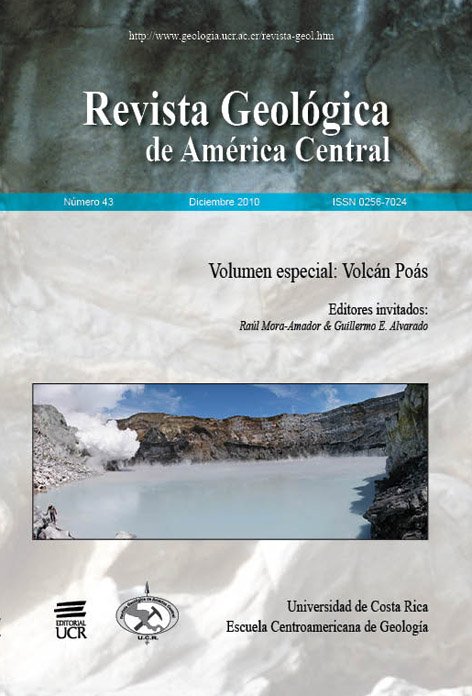Abstract
We report results from a multidisciplinary campaign conducted at Poás volcano (Costa Rica) in March 2009. Thermal imagery of the fumaroles sited on the north side of the pyroclastic cone revealed mean apparent temperatures ranging between 25 and 40°C with a maximum apparent temperature of 80°C. The crater lake surface was characterised by mean apparent temperatures varying between 30 and 35°C and a maximum recorded value of 48°C. Thermal profiles across the lake surface revealed steady temperatures and thus thorough convective mixing. The overall mean SO2 flux emitted from the crater was 76 Mg d-1, with approximately equal contributions from both the pyroclastic cone and the lake. Analysis of gas composition using active, open-path FTIR spectroscopy indicated molar ratios of H2O/SO2 = 151, CO2/SO2 = 1.56, SO2/HCl > 40, and SO2/HF > 200 for the lake emission. The plume was also sampled using filter packs. Ion chromatographic analysis revealed the presence of abundant K+ and SO4 2-, with small amounts of Ca2+, Cl-, and Mg2+. This provides a detailed picture of lake surface temperature characteristics and of gas flux and composition of the plume emitted from Poás. The results are consistent with the typical non-eruptive state of this volcano.##plugins.facebook.comentarios##
Downloads
Download data is not yet available.






